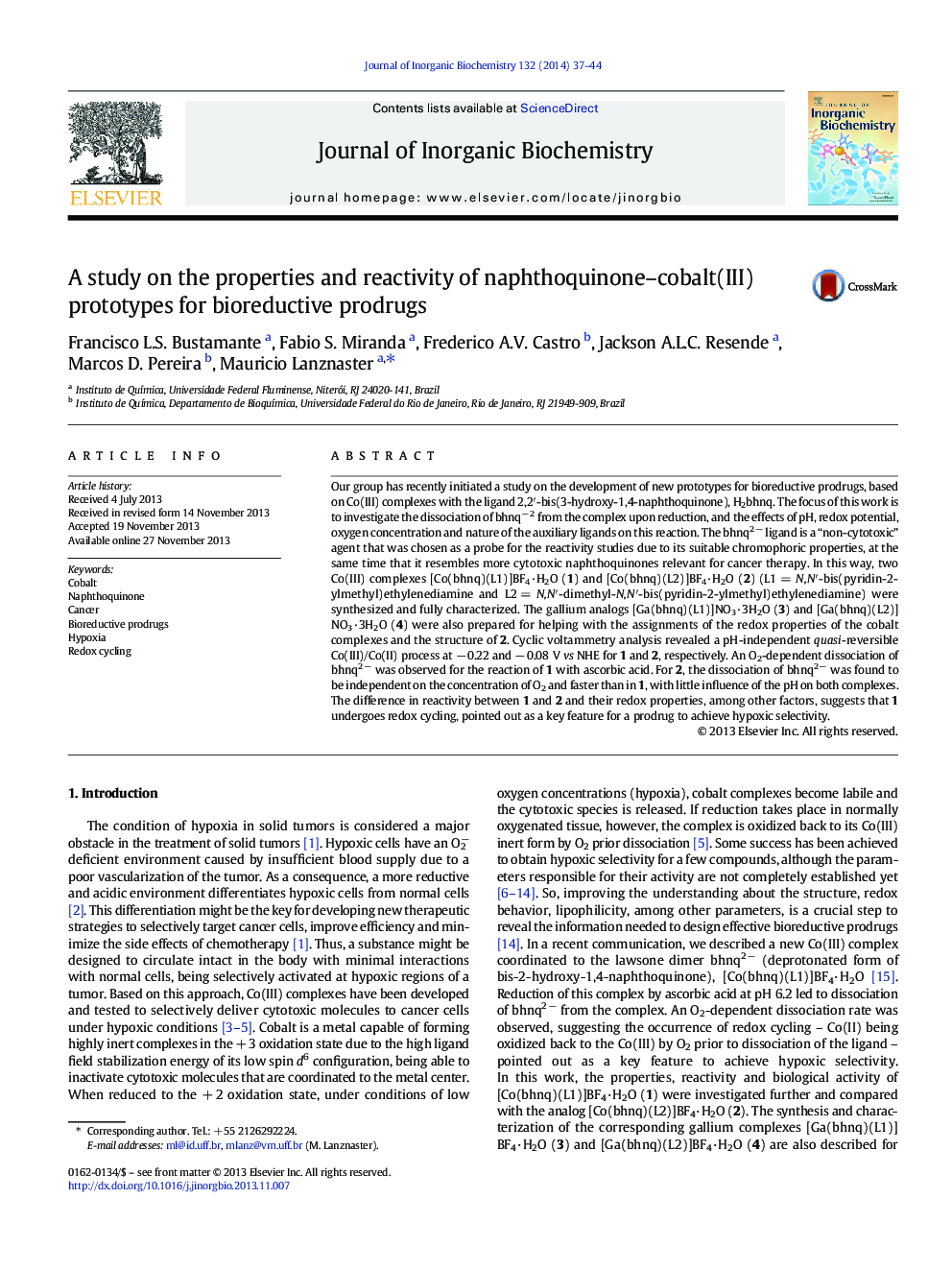| کد مقاله | کد نشریه | سال انتشار | مقاله انگلیسی | نسخه تمام متن |
|---|---|---|---|---|
| 1316196 | 1499455 | 2014 | 8 صفحه PDF | دانلود رایگان |

• Co(III) complexes were investigated as prototypes for bioreductive prodrugs.
• A reversible Co(III)/Co(II) process was observed in aqueous solutions.
• Naphthoquinone dissociation takes place upon reduction of complexes by ascorbic acid.
• An oxygen dependent dissociation rate indicates that redox cycling is occurring.
• Cytotoxic/cytostatic effects on S. cerevisiae were observed for Co and Ga complexes.
Our group has recently initiated a study on the development of new prototypes for bioreductive prodrugs, based on Co(III) complexes with the ligand 2,2′-bis(3-hydroxy-1,4-naphthoquinone), H2bhnq. The focus of this work is to investigate the dissociation of bhnq− 2 from the complex upon reduction, and the effects of pH, redox potential, oxygen concentration and nature of the auxiliary ligands on this reaction. The bhnq2 − ligand is a “non-cytotoxic” agent that was chosen as a probe for the reactivity studies due to its suitable chromophoric properties, at the same time that it resembles more cytotoxic naphthoquinones relevant for cancer therapy. In this way, two Co(III) complexes [Co(bhnq)(L1)]BF4·H2O (1) and [Co(bhnq)(L2)]BF4·H2O (2) (L1 = N,N′-bis(pyridin-2-ylmethyl)ethylenediamine and L2 = N,N′-dimethyl-N,N′-bis(pyridin-2-ylmethyl)ethylenediamine) were synthesized and fully characterized. The gallium analogs [Ga(bhnq)(L1)]NO3·3H2O (3) and [Ga(bhnq)(L2)]NO3·3H2O (4) were also prepared for helping with the assignments of the redox properties of the cobalt complexes and the structure of 2. Cyclic voltammetry analysis revealed a pH-independent quasi-reversible Co(III)/Co(II) process at − 0.22 and − 0.08 V vs NHE for 1 and 2, respectively. An O2-dependent dissociation of bhnq2 − was observed for the reaction of 1 with ascorbic acid. For 2, the dissociation of bhnq2 − was found to be independent on the concentration of O2 and faster than in 1, with little influence of the pH on both complexes. The difference in reactivity between 1 and 2 and their redox properties, among other factors, suggests that 1 undergoes redox cycling, pointed out as a key feature for a prodrug to achieve hypoxic selectivity.
Co(III) complexes were investigated as prototypes for bioreductive prodrugs. Dissociation of a naphthoquinone-ligand takes place upon reduction of the complexes by ascorbic acid. A reversible Co(III)/Co(II) reduction and an oxygen dependent dissociation rate indicates that redox cycling, a key feature to achieve hypoxic selectivity, is occurring.Figure optionsDownload as PowerPoint slide
Journal: Journal of Inorganic Biochemistry - Volume 132, March 2014, Pages 37–44